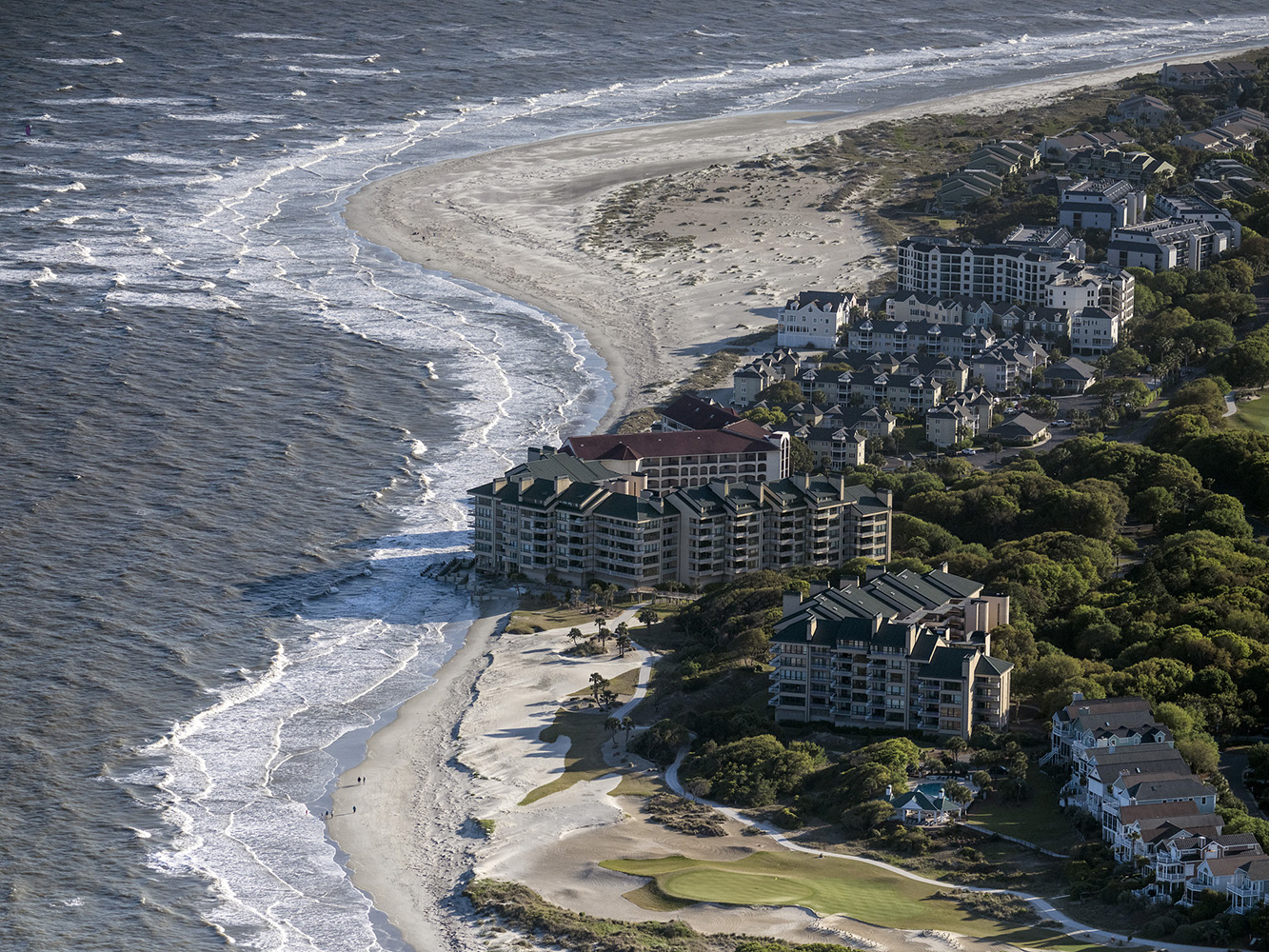Photography And Our Rising Seas
© J. Henry Fair https://www.jhenryfair.com
Along the Eastern Seaboard of the United States, sea levels are rising faster than the global average. With cities like Boston and New York set to experience twice the global mean modeled by the National Center for Atmospheric Research, $50 billion in Bay Area housing at risk by 2050 due to increased flooding, and Miami looking more like Venice every high tide, it’s safe to say our coastlines are fraught spaces. But artists are responding. That’s why photographer J. Henry Fair has taken to documenting coastlines and his images capture the public’s draining confidence in their longevity. It’s tough to think of our homes, our built landscapes, as impermanent but climate change induced sea level rise is changing everything. It’s getting harder and harder to distance ourselves from the effects of our anthropogenic, destructive lifestyle.
© J. Henry Fair https://www.jhenryfair.com
Fair’s photos can incite chills in any spectator who knows the realities of a warming planet. In his photos, it’s hard to miss the physical proximity of the shoreline to the adjacent infrastructure and the entailed fragility. The coastlines Fair captures range from the towering casinos of Atlantic City along the Jersey Shore, to Dauphin Island of Alabama where residents’ homes are built on stilts and regularly experience floods. In his book, On The Edge, Fair dives deep into South Carolina, one of the states experiencing rapidly rising sea levels. One notable photo reveals a condominium in Isle of Palms one quarter of the way already in the water. Fair makes the point that this beach was not developed until thirty years ago and inappropriate planning decisions were made in spite of the risks. He asks, “Will the taxpayer finance the salvation of this structure, only to have it washed away again in the next hurricane?” This, a question residents of New York asked after Super Storm Sandy and homeowners across the East Coast face regularly.
Sand: Amphitheater, Theater, Arena, 2018, 176 cubic yards of sand in 6,000 standard flood mitigation sandbags, Miami Beach, Florida. © Misael Soto Photo credit: Phillip Karp http://misaelsoto.com/
These changes are not new nor surprising. As global temperatures rise, glacial melting in the Arctic Ocean and the Greenland ice sheet releases large quantities of fresh water into the ocean and disrupts longstanding ocean circulation patterns. The threat of glacial melt is now a cold reality. Just this Sunday, August 18th, Iceland held a funeral for the death of the glacier, Okjokull. Okjokull was the first of the nation’s glaciers lost to climate change. That’s why Miami artist and founder of the ‘Underwater Homeowners Association,’ Xavier Cortada is not exaggerating when he says, “Antarctica is coming to town.” Miami Beach, another city on the frontlines of the climate battle, recently welcomed the first ever artist-in-residence to their Office of Resilience, Misael Soto. Soto’s work has included beachfront sandbag amphitheaters and massive beach blankets with an aim to activate gathering spaces for a community approach to resilience.
© Pekka Niittyvirta & Timo Aho Lines (57° 59′ N, 7° 16’W) http://www.niittyvirta.com/
Do artists have a role to play in this climate crisis? Work like this can only help us cough up a resounding yes. What does this climate crisis look like? It can look like J. Henry Fair’s photo of a shipping terminal in a precarious wetland area, Pekka Niittyvirta and Timo Aho photographing new landscapes after setting light lines where projected sea levels will rise over homes and other property, or perhaps Virginia Hanusik’s documentation of daily climate adaptations to events such as sunny day flooding, a costly, pervasive and consistent aspect of the climate crisis along the East Coast. It is paramount that the response to our dangerously changing climate is as radical as these new circumstances, and on the same scale. That’s why artists breaking tradition like this is a response worth hearing.
Houseboat on the Atchafalaya Basin, 2018 © Virginia Hanusik http://www.virginiahanusik.com












